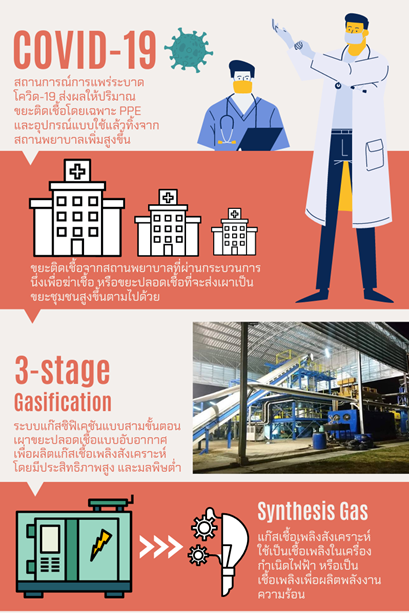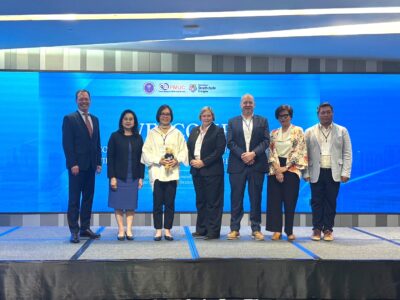With the current epidemic of emerging infectious disease, Corona-virus Disease 2019 (COVID-19), which has spread rapidly around the world, including Thailand, aside from the public health problems facing the world, the management of waste materials generated from the prevention and treatment of diseases caused by the outbreak of COVID-19, including Personal Protective Equipment (PPE), rubber gloves, masks, hair caps, shoe covers, as well as single-use PPEs, has become yet another challenge that the world has to deal with. At present, most of the management of infectious waste from public health facilities is by incineration, including disposal with a steam sterilization system before being disposed of as municipal solid waste. There are limitations to these management methods, and a lack of efficiency and proper standards can have serious consequences for community health and the general environment. In this regard, Thailand Institute of Scientific and Technological Research (TISTR), by the Center for Innovation in Clean Energy and Environment, has the idea of applying the three-step gasification technology (3-Stage Gasification) to be used in Aseptic waste management or waste that has been sterilized by steam to dispose of and turn sterile waste into energy.

Three-stage gasification is a prototype plant-level technology installed at Lam Ta Khong Research Station, Nakhon Ratchasima, to support 10 tons of raw materials per day to produce electricity from biomass and waste. There are five main components: the feeding and drying system for raw materials, synthetic fuel gas production furnace, gas cleaning system, water quality improvement system, and a 200 kW generator. The output from gasification is synthetic fuel gas, which contains hydrogen and carbon monoxide This synthetic gas can be used as a fuel to generate electricity and heat. This three-step gasification process is highly efficient and emits much lower pollution than general combustion systems.
In 2019, TISTR, together with Namwiwat Karnchang (1992) Co., Ltd., successfully studied the feasibility of applying a three-stage gasification system for sterile waste disposal and conversion to electric power. And in 2020, TISTR has worked to expand the research scope to be more comprehensive. The research budget was supported by the Program Management Unit for Competitiveness (PMUC) to study the conversion of used PPEs and infectious waste into energy, including building a prototype and a learning center for the management of sterile used PPEs in the wake of the COVID-19 pandemic. Other sterile waste was also experimented for energy generation and low pollution emission with the use of the three-stage gasification technology under the project “A Study on the Approach to Converting Used PPEs and Sterile Waste to Energy by Three-Stage Gasification Technology”.







